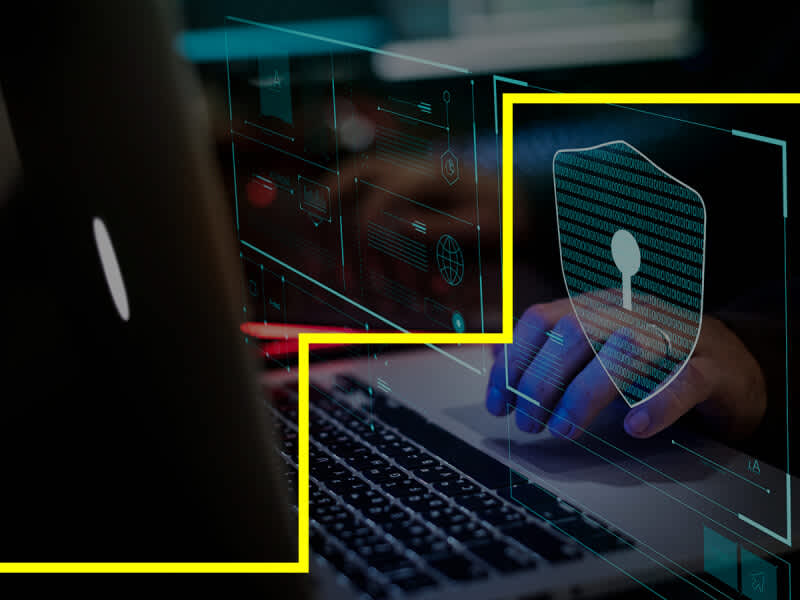
Fundamentals of Cybersecurity Course
Information is the lifeblood for organizations of all types. Therefore everyone needs to have a fundamental understanding of the interdisciplinary field of cybersecurity. This course provides this fundamental knowledge by taking the learner through the evolution of the discipline from information security to cybersecurity. Learners evaluate several important laws, which have significant impact on cybersecurity strategy.
Learners also investigate multiple cybersecurity technologies, processes, and procedures; they learn how to analyze threats, vulnerabilities, and risks in these environments, and develop appropriate mitigation strategies by applying a mission-focused and risk-optimized approach.
This survey course introduces learners to the three primary sources of threats (technology, policy, and people, both internal and external) and the three classes of tools: technology, policy, and people used to develop an organizational cybersecurity strategy. This course and exercises are designed to emphasize, encourage and enhance the critical thinking abilities of learners. Although the course is not designed to prepare learners for this test, the material covered in this course includes most of the knowledge tested in the CompTIA Security+ exam.
Learners will apply their learning by performing systematic case studies of actual organizations.
Course level
Undergraduate
Course duration
max. 8 weeks
Estimated time per week
10-15 hours
Course prerequisites
None
Cost
$ -
Course credits
3
Relevant jobs
Fundamentals of Cybersecurity Course Overview
Analyze the evolution of cybersecurity from the information security models of 1991 to the modern dynamic and holistic models covering people, policy, and technology with a focus on mission, risk, and governance.
Evaluate how the legal, policy, and regulatory landscape impacts organizational data classification, risks, access control and other cybersecurity requirements.
Analyze typical organizational information network, data storage, transmission, and processing architectures both on premises and in the cloud, including various technology, policy, and people threats from both inside and outside the organization.
Examine layered technical defense strategies and various technology tools and controls
Propose effective information governance policies along with incentives and penalties to shape behavior and foster a healthy cybersecurity culture in an organization.
Identify the need for appropriate communications strategies both within and outside the organization.
Fundamentals of Cybersecurity Course Skills
How will I learn?
Learning Experience
Your course starts on the first of the month. The course consists of 6 modules, and is designed to take you eight weeks to complete. Nexford’s learning design team has purposefully created courses to equip you with competencies mapped to the skills employers are looking for. Each course has 5-7 learning outcomes based on the skills employers need. Everything you learn gives you measurable skills you will use to succeed in today’s world of work.
Nexford courses are not live or recorded lectures. Instead, they’re reading, videos, interactive elements, quizzes and relevant case studies. Programs include assessments, peer-to-peer discussions, and a final project to practice what you’ve learned in a real-world context. Program content is available 24/7 during the course, and you have opportunities for collaboration and networking with learners during and after your program. Our global community of learners work at top companies such as Microsoft, Deloitte, and Google.
You'll have 24/7 access to success advisors to support you. Faculty also provide you world-class support. Book appointments with them, get individual feedback, and attend regular optional webinars.Nexford courses are rigorous and they encourage critical thinking - because we care about what you know how to do not what you know you have regular hands-on assessments reflecting the business world.
Course Outline
| Modules |
|---|
| 1: Cybersecurity models, key goals, tools, and concepts |
| 2: Legal, policy, and regulatory requirements |
| 3: Information environments and threats |
| 4: Technical controls |
| 5: People and policy controls |
| 6: Cybersecurity in mobile, social, and global context |
| 7: Final Project |
How will I be graded?
View the catalog to learn about how this course is graded.
What will I get after completing the course?
You'll get real skills you can use at work, straight away.
Once you've taken one course, you can take more. Using stacked credentials, you’re able to take enough courses to make a certificate, and take enough certificates to build a degree.
If you apply for a Nexford certificate or degree, you'll get credit for each course you take.
What support will I receive?
When you have a dedicated team on your side, you'll never be alone studying at Nexford. Hailing from many different countries and with online education expertise, our faculty provides you world-class support. Ask them questions during one-to-one office hours or live chat, email them any time, and get individual feedback on your assessments.
While you’re learning, you’ll also have full access to the Nexford online library, which includes access to millions of full-text articles, industry reports and key sources such as the Wall Street Journal, the Financial Times and The Economist.

LinkedIn Learning: unlimited access with Nexford
Support your Nexford goals with access to LinkedIn Learning during your program, at no additional cost. Explore the learning hub of the globe’s biggest professional networking platform to:
- Power your career: choose from over 16,000 expert-led courses, from remote working to data science
- Show off your skills: earn a certificate when you complete a course
- See what’s trending: LinkedIn Learning adds 25 new courses each week
- Tailor your learning: choose relevant courses based on your experience, LinkedIn profile and goals
- Test what you’ve learned: use LinkedIn Learning assessments



